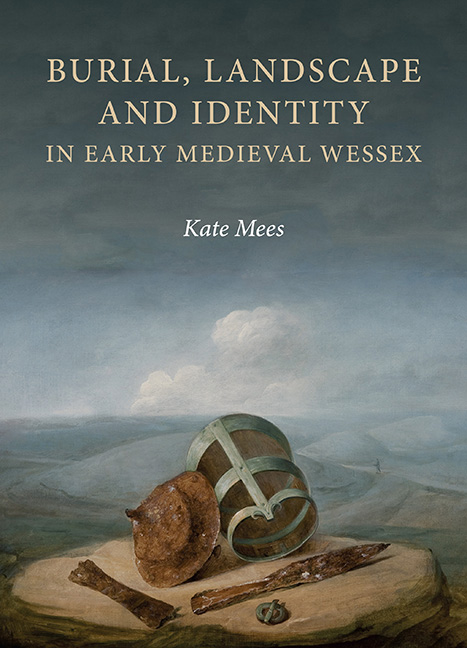Book contents
- Frontmatter
- Dedication
- Contents
- List of Illustrations
- Acknowledgements
- List of Abbreviations
- Note on Period Terminology and Other Definitions
- Introduction: Perspectives, Approaches and Context
- 1 Monument Reuse and the Inherited Landscape
- 2 Topography and Ritual Life
- 3 ‘Britons and Saxons’?
- 4 Land Use, Territoriality and Social Change
- 5 The Church and the Funerary Landscape
- Conclusions
- Appendix: Gazetteer of burial sites in the study area, c. AD 450–850
- Bibliography
- Index
- Anglo-Saxon Studies
4 - Land Use, Territoriality and Social Change
Published online by Cambridge University Press: 24 October 2019
- Frontmatter
- Dedication
- Contents
- List of Illustrations
- Acknowledgements
- List of Abbreviations
- Note on Period Terminology and Other Definitions
- Introduction: Perspectives, Approaches and Context
- 1 Monument Reuse and the Inherited Landscape
- 2 Topography and Ritual Life
- 3 ‘Britons and Saxons’?
- 4 Land Use, Territoriality and Social Change
- 5 The Church and the Funerary Landscape
- Conclusions
- Appendix: Gazetteer of burial sites in the study area, c. AD 450–850
- Bibliography
- Index
- Anglo-Saxon Studies
Summary
The previous chapter explored the variations in the burial customs of fifth- to ninth-century Wessex, which are resonant not merely of contrasting embodiments of cultural or ethnic identity but of different modes of social and political interaction. Distinct funerary idioms are identifiable from pays to pays and from county to county, and are diachronically mutable rather than static. Such trends must surely have been influenced to a significant degree by a dynamic and turbulent climate of emerging territories, shifting boundaries and rising social stratification. Beyond a simple cultural frontier between West Saxons and Britons, changing political configurations are potentially distinguishable at a range of scales, including but not limited to the formation and consolidation of a number of smaller polities and their ultimate assimilation into an expanding Wessex. By the mid-seventh century, the West Saxon kingdom is likely to have incorporated an assortment of sub-kingdoms under the overlordship of the king.
This chapter first asks what form early territorial entities may have taken, from the level of the estate to the more extensive ‘early folk territory’, and introduces some of the proposed models for their development. This leads us on to explore and re-evaluate the relationship between Early to Middle Anglo-Saxon burial sites and the boundaries of ecclesiastical parishes and hundreds. One benefit of a close regional and sub-regional scale of approach is that it can offer us an insight into broader societal and territorial changes. Examining the character and positioning of burial sites in relation to landscape character areas, boundaries and communication routes allows us to contextualise changes in agrarian practices and systems of land holding, especially from around the beginning of the Middle Anglo-Saxon period. The emergence of the phenomenon of isolated high-status burial – of course most notably exemplified by the standout examples of barrow burials accompanied by enigmatic prestige assemblages – is of particular note in this context, and warrants detailed micro-topographical investigation. Such burials are frequently located close to ecclesiastical parish boundaries on the chalk downland, the configuration of which owes much to the natural topography and the ways in which the land has been worked and farmed over several millennia. It is therefore of particular importance to critically reassess how and when these boundaries may have taken shape, and what function and meaning these seemingly marginal zones might have possessed when the burials were made.
- Type
- Chapter
- Information
- Burial, Landscape and Identity in Early Medieval Wessex , pp. 147 - 178Publisher: Boydell & BrewerPrint publication year: 2019



